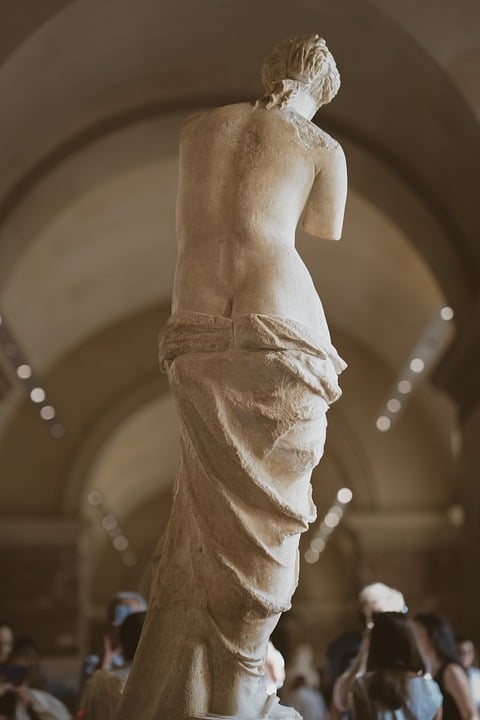The Louvre, nestled in the heart of Paris along the Seine, is renowned globally not just for its iconic pyramid and vast size, but also for its unparalleled collection of art that spans thousands of years and multiple cultures. While millions flock to see the Mona Lisa, the Venus de Milo, or the Winged Victory of Samothrace, the museum houses an eclectic repository of lesser-known pieces each with their own captivating stories. This article will explore some of these hidden treasures and the intriguing histories behind them.
1. The Lacemaker by Johannes Vermeer
Although not as crowded as the room displaying the Mona Lisa, Johannes Vermeer’s “The Lacemaker” is an exceptional example of the artist’s masterful use of color and light. This painting, significantly smaller than many of his other works, captures a moment of everyday life with extraordinary intimacy and detail. Vermeer’s focus on the young woman absorbed in her task provides a glimpse into 17th century domestic life and showcases his talent for depicting ordinary scenes filled with quiet drama and meticulous attention to detail.
2. The Code of Hammurabi
One of the most ancient and significant pieces in the Louvre is the Code of Hammurabi, dating back to around 1754 BC. This well-preserved Babylonian law code is one of the oldest deciphered writings of significant length in the world. The stele represents not only a legal document but also a symbol of justice and governance. The laws inscribed on it cover various aspects, from theft and agriculture to family law, revealing a lot about daily life and societal structure in ancient Mesopotamia.
3. The Wedding Feast at Cana by Paolo Veronese
Overshadowed frequently by the Mona Lisa, which faces it across the room in the Louvre, “The Wedding Feast at Cana” is the largest painting in the museum’s collection. This grand work invites viewers to delve into a biblical story, reimagined on an epic scale, and reflects the lavishness of 16th-century Venetian feasts. Upon closer examination, one might spot historical figures such as Suleiman the Magnificent and Queen Mary I of England camouflaged amongst the biblical characters, illustrating Veronese’s penchant for weaving contemporary notables into his narratives.
4. The Seated Scribe
Unlike the grandiose statues and intricate gold ornaments of the Egyptian antiquities, “The Seated Scribe” portrays a figure from daily life. Dating from around 2500 BC, this lifelike statue differs from the often-idealized depictions of pharaohs and gods. The scribe, captured in limestone and inlaid with rock crystal eyes, is an essential link to understanding the administrative and intellectual life of ancient Egypt, where scribes played a vital role in society.
5. The Jewels of Reginet
Though not a singular piece, the collection of jewels known as the "Reginet" conveys the opulence and craftsmanship of ancient jewelry making. These adornments belonged to a Greco-Roman woman and offer an insight into the aesthetics, daily lives, and social practices of ancient cultures through the luxurious materials and intricate designs, highlighting a personal yet expansive narrative of historical adornment practices.
6. Aphrodite of Milos
More commonly known as the Venus di Milo, this celebrated statue is renowned for its beauty, but the story of its discovery is equally fascinating. Found in two main pieces along with several fragments on the island of Milos in 1820, this statue’s journey to the Louvre was filled with diplomatic intrigue, involving French sailors and the Ottoman Empire. The mystery of her missing arms has piqued the imagination of many, leading to endless speculation and study about her original posture and attributes.
Exploring these lesser-known pieces in the Louvre allows for a deeper and more diverse understanding of the museum’s vast and varied collection. Each artifact not only holds an aesthetic value but also serves as a bridge to the past, offering insights into the historical, cultural, and social dynamics of different eras. This dive into the less traversed corridors of the Louvre reveals the richness lying beyond its blockbuster masterpieces, inviting art lovers and history enthusiasts alike to uncover the myriad stories embedded within its walls.


